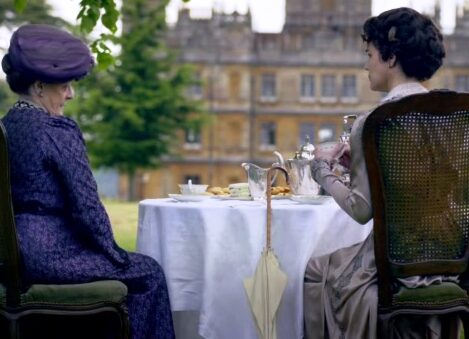
There is always time to stop, reflect and enjoy the simple pleasures of life that the Brits call Afternoon Tea.
It has a long history with many traditions which can be daunting at first, but with a little knowledge you too can enjoy taking tea in the most famous tea houses, or host our own tea.
A Brief History
- In 1662 Catherine of Braganza of Portugal married Charles II and brought with her the preference for tea over alcohol to Court.
- 1830/40’s. Anne, Duchess of Bedford, one of Queen Victoria’s ladies-in-waiting “invented” the Afternoon Tea, having food brought to her room in the afternoon; some ladies were invited, others set about gathering their own friends together.
- Afternoon Tea is likely what you are going to want to book. It is the tea service served with the little sandwiches, scones and tea.
- Cream Tea is a tea service with just scones, cakes, clotted cream and tea. No lovely little crustless sandwiches, I’m afraid.
- Think of High Tea as supper, not time for scones.
- When building your tea tray, the preferred order is scones on top, sweets and fruit in the middle and the savouries–wee tarts and sandwiches–on the bottom layer.
- Your freezer (or your local grocer) is your friend when preparing your tea party. Sandwiches need to be made fresh, but you can freeze much of your baked goods.
- Allow 5 savoury items per person, 3 or 4 different types of sweets.
Today’s Lesson 1: How to Make Tea
Don’t get too stressed about making tea, particularly since much tea is now sold in teabags. To distinguish yourself as a tea aficionado, however, just follow the time-honored tradition of first warming the teapot. Add a bit of boiling water to the pot, give it a swirl and pour it out before adding your tea. Steep 3 or 4 minutes and don’t let the tea steep too long or it will become bitter.
If you go with loose tea, the general guideline is to allow for 1 tsp per person, 1 tsp for the pot, and allow 10 ounces per person. Use a tea strainer and pour into cups. You may wish to fill your teapot with tap water, pour it into a measuring cup to determine how many cups your pot will hold.
Lesson 2: How to Make Scones
Once you have tea covered, next you need to learn how to make scones. This is my favourite recipe which uses a few ingredients with a variety of variations.
The Ultimate Magic Scones
Equipment
- 2 inch cookie cutter
Ingredients
- 1 cup all-purpose flour
- 2 tsp. baking powder
- ¼ tsp. salt
- 2 tbsp. unsalted butter frozen and grated
- ½ cup cold milk
Instructions
- Preheat oven to 475° F
- Sift the dry ingredients 3 times into a large bowl. Rub the frozen grated butter into the dry ingredients until it feels like sand. Add enough milk just until you get a sticky dough.
- Turn the dough out onto a lightly floured board, lightly flour the top. Knead very gently once, then fold and turn the kneaded dough 3 or 4 times until the dough has formed a smooth texture. Pat the dough into a rectangle about 6” x 12”, then fold into thirds.
- Using a well-floured 2” biscuit cutter, make 6 x 2” rounds. You can get 2 more scones from the scraps but they won’t be as tender. Alternatively, use a well-floured sharp knife to form wedges.
- You can either brush the top of the scones with milk or lightly flour.
- Bake on a baking sheet for 8-10 minutes until the scones are lightly coloured on the tops. Immediately place onto cooling rack to stop the cooking process.